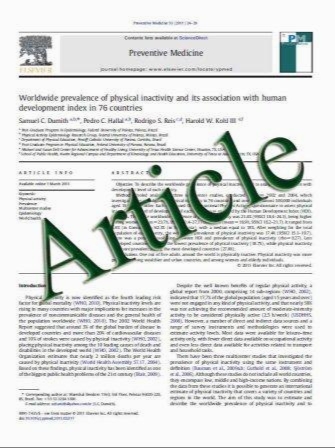Low-frequency axial ultrasound velocity correlates with bone mineral density and cortical thickness in the radius and tibia in pre- and postmenopausal women
- نوع فایل : کتاب
- زبان : انگلیسی
- مؤلف : V. Kilappa & P. Moilanen & L. Xu & P. H. F. Nicholson & J. Timonen & S. Cheng
- چاپ و سال / کشور: 2010
Description
Summary Axial transmission velocity of a low-frequency first arriving signal (VLF) was assessed in the radius and tibia of 254 females, and compared to site-matched pQCT measurements. VLF best correlated with cortical BMD, but significantly also with subcortical BMD and cortical thickness. Correlations were strongest for the radius in postmenopausal females. Introduction Ultrasonic low-frequency (LF; 0.2–0.4 MHz) axial transmission, based on the first arriving signal (FAS), provides enhanced sensitivity to thickness and endosteal properties of cortical wall of the radius and tibia compared to using higher frequencies (e.g., 1 MHz). This improved sensitivity of the LF approach has not yet been clearly confirmed by an in vivo study on adult subjects. The aims of the present study were to evaluate the extent to which LF measurements reflect cortical thickness and bone mineral density, and to assess whether an individual LF measurement can provide a useful estimate for these bone properties. Methods Velocity of the LF FAS (VLF) was assessed in the radius and tibia shaft by a new ultrasonometer (CVRMS=0.5%) in a cross-sectional study involving 159 premenopausal (20–58 years) and 95 postmenopausal females (45–88 years). Site-matched volumetric total bone mineral density (BMD), cortical bone mineral density (CBMD), subcortical bone mineral density (ScBMD) and cortical thickness (CTh) were assessed using pQCT. Results For the postmenopausal females, VLF correlated best with CBMD in the radius (R=0.850, p<0.001), but significantly also with ScBMD and CTh (R=0.759 and R=0.761, respectively; p<0.001). Similar trends but weaker correlations were observed for the tibia and for the premenopausal women. Conclusions The LF assessment, with an optimal excitation frequency, thus provided good prediction of both cortical thickness and subcortical bone material properties. These results suggest that the LF approach does indeed have enhanced sensitivity for detecting osteoporotic changes that occur deep in the endosteal bone.
Osteoporos Int (2011) 22:1103–1113 DOI 10.1007/s00198-010-1273-7 Received: 6 November 2009 / Accepted: 8 April 2010 / Published online: 25 June 2010


